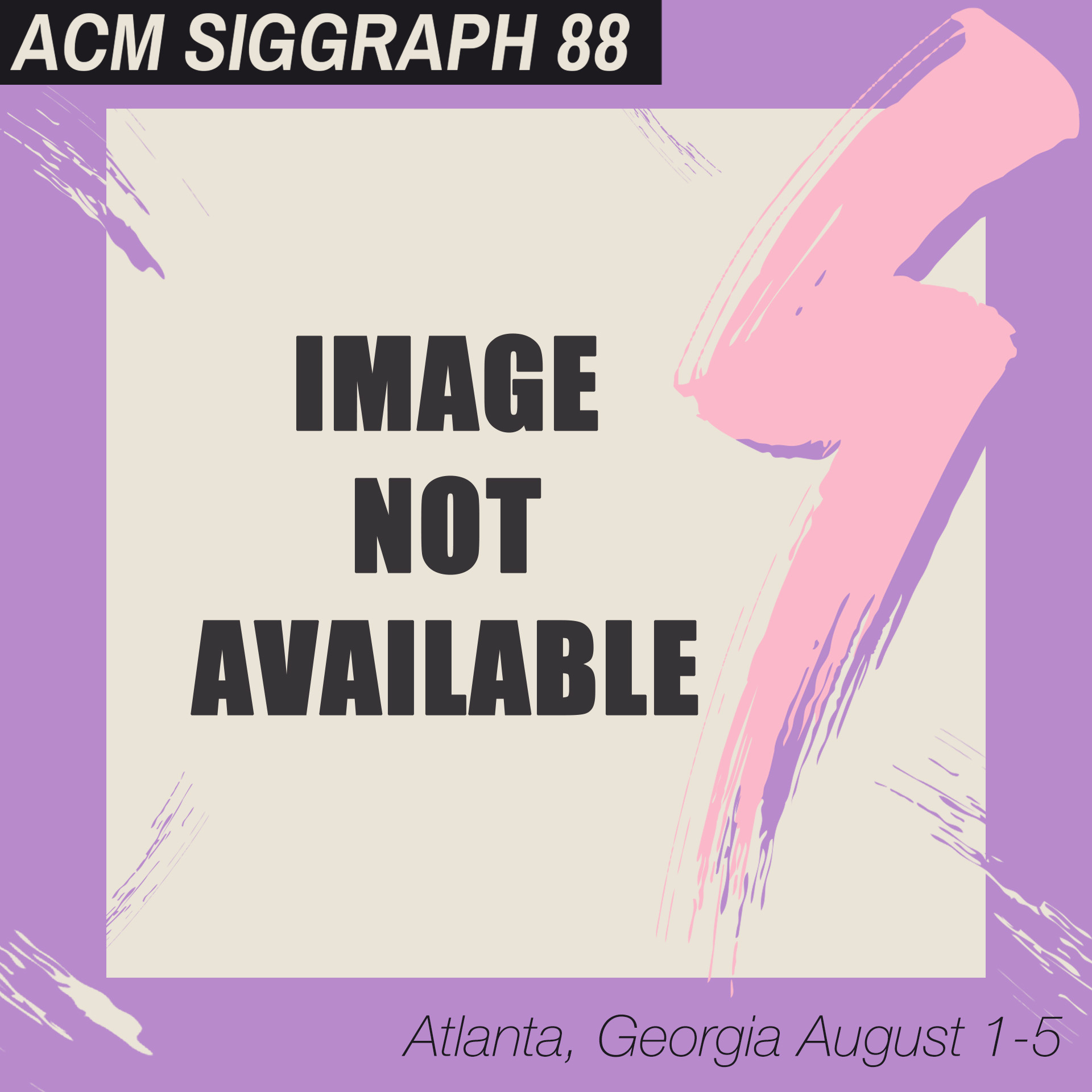“Constraints methods for flexible models” by Platt and Barr
Conference:
Type(s):
Title:
- Constraints methods for flexible models
Presenter(s)/Author(s):
Abstract:
Simulating flexible models can create aesthetic motion for computer animation. Animators can control these motions through the use of constraints on the physical behavior of the models. This paper shows how to use mathematical constraint methods based on physics and on optimization theory to create controlled, realistic animation of physically-based flexible models. Two types of constraints are presented in this paper: reaction constraints (RCs) and augrmented Lagrangian constraints (ALCs). RCs allow the fast computation of collisions of flexible models with polygonal models. In addition, RCs allow flexible models to be pushed and pulled under the control of an animator. ALCs create animation effects such as volume-preserving squashing and the molding of taffy-like substances. ALCs are compatible with RCs. In this paper, we describe how to apply these constraint methods to a flexible model that uses finite elements.
References:
1. Arrow, K., Hurwicz, L., Uzawa H., Studies in Linear and Nonlinear Programming, (Stanford University Press, Stanford, CA, 1958).
2. Badler, N., “Multi-Dimensional Input Techniques and Articulated Figure Positioning By Multiple Constraints,” 1986 Workshop on Interactive 3D Graphics (Chapel Hill, NC, 1986).
3. Barzel, R., Barr, A., “Modeling with Dynamic Constraints,” in Topics in Physically Based Modeling, SIGGRAPH Tutorial 17 Notes, (1987).
4. Bertsekas, D., “Multiplier Methods: a Survey,” Automatica, 12, 133-145, (1976).
5. de Boor, C., A Practical Guide to Splines, (Springer-Verlag, NY, 1978).
6. do Carmo, M., Differential Geometry of Curves and Surfaces, (Prentice-Hall, Englewood Cliffs, N J, 1974).
7. Feynman, C., Modeling the Appearance of Cloth, MSc Thesis, EECS Dept. , (MIT, Cambridge, MA, 1986).
8. Fung, Y., Foundations of Solid Mechanics, (Prentice-Hall, Eaglewood Cliffs, NJ, 1965).
9. Girard, M., Maciejcwski, A. “Computational Modelling for the Computer Animation of Legged Figures,” Proc. SIGGRAPH 1985 263-270, (1985).
10. Goldstein, H, Classical Mechanics, (Addison-Wesley, Reading, MA, 1950).
11. Haumann, D., “Modeling the Physical Behavior of Flexible Objects”, in Topics in Physically-Based Modeling, SIGGRAPH Tutorial 17 Notes, 1987.
12. Hestenes, M., Optimization Theory, (Wiley & Sons, NY, 1975).
13. Issues, P., Cohen, M., “Controlling Dynamic Simulation with Kinematic Constraints, Behavior Functions and Inverse Dynamics,” Proc. SIGGRAPH 1987, 215-224, (1987).
14. Press, W., Flannery, B., Teukolsky, S., Vetterling W., Numerical Recipes, (Cambridge University Press, Cambridge, 1986).
15. Terzopoulos, D., Platt, J., Burr, A., Fleischer, K., “Elastically Deformable Models,” Proc. SIGGRAPH 1987, 205-214, (1987).
16. Truesdell, C., “The Non-Linear Field Theory of Mechanics,” in Encyclopedia of Physics, S. Fl~gge, ed., III/3 (Springer-Verlag, Berlin, 1965).
17. Well, J., “The Synthesis of Cloth Objects,” Proc. SIGGRAPH 1986, 49-54 (1986),
18. Wilhelms, J., Barsky, B., “Using Dynamic Analysis to Animate Articulated Bodies such as Humans and Robots,” Proc. Graphics Interface ’85, 97-104 (Montreal, 1985)
19. White, R., An Introduction to the Finite Element Method with Applications to Non-linear Problems, (John Wiley & Sons, NY, 1985),
20. Witkin, A., Fleiseher, K., Barr, A., “Energy Constraints on Parametrized Models,” Proe. SIGGRAPH 1987, 225-232, (1987).
21. Zienkiewicz, O., The Finite Element Method, Third Edition, (McGraw-Hill, London, 1977).





